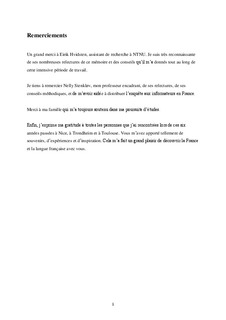| dc.description.abstract | In this master’s thesis we try to define the semantics of one of the new extensions of the French spatial preposition sur. Recently this preposition has shown a growing tendency to replace à in certain settings, one of these being when it is placed in front of city names. This study aims to be a contribution towards the semantic definition of sur when it serves as a replacement for à in this context.To further investigate this recent phenomenon, we started off with looking into French prepositional semantics to see how sur is defined. It became apparent that defining sur’s semantics is a complex task to begin with. Traditionally sur is considered a concrete, configurational preposition. On one hand, this makes sur à’s complete opposite, because à is defined as abstract and a simple localizer. On the other hand, sur is used in so various domains that are both concrete and abstract, that linguists now consider the preposition as semantically “mixed”. After having defined sur as a “mixed” preposition, we learned how the use of sur in front of city names advances the preposition even further towards abstraction. We studied Vandeloise’s (1986) characterizations of sur’s spatial uses and found that these characterizations don’t seem suitable for sur in combination with a territorial noun. The reason being that neither contact nor support seems accurate in the description of the semantics of sur when placed in front of a city name. Instead we have proposed, in lines with Huyghe (2012) and Hernández (2010) that sur, when it replaces à, rather profiles the spatial landmark as a ground for human activity. The landmark is a ground for action; it does not necessarily, or primarily, serve as support for the target. Additionally, we found that when sur replaces à, this does not happen systematically, but in contexts that are characterized by a mobile relation between the target and the landmark. Sur expresses a temporary relation between the target and the landmark, a relation that could change, and that is most definitely unstable. In conclusion we define the use of sur in front of a city name as a use where the preposition’s configurative role is weakened, so much so to that it serves an abstract and functional use rather than a spatial and concrete. | nb_NO |
